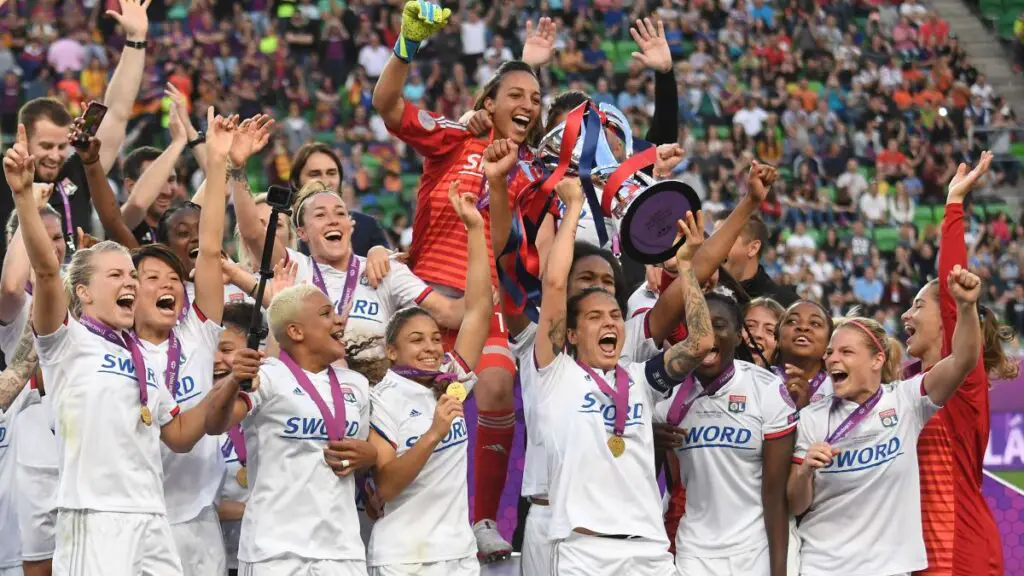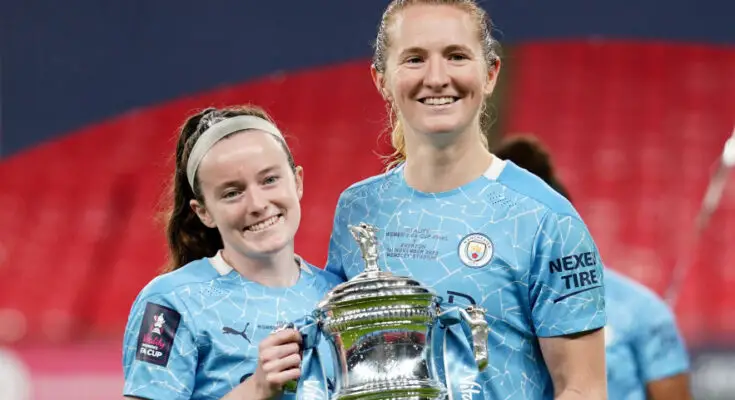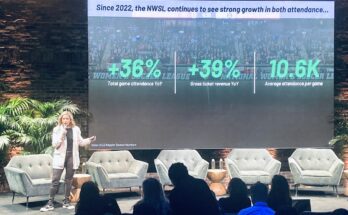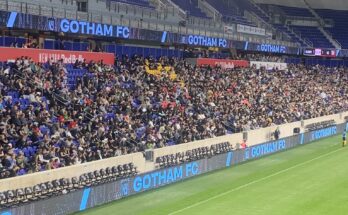Sunday’s Super League announcement has angered supporters, opposing teams, players; just about every European governing soccer body, and even national governments. Within the Super League’s press release was one telling line, “As soon as practicable after the start of the men’s competition, a corresponding women’s league will also be launched, helping to advance and develop the women’s game.” In other words – they’re an afterthought. Part of the backlash is a ban from UEFA (the European governing body of football competition) and FIFA (the global governing body) competitions, meaning domestic and international play will be out the window for the 12 teams that helped form the league.
News is releasing on this breaking news that shook the soccer world by the hour. One area lacking clarity is the ban’s impact on women’s teams. The dozen clubs have club-supported women’s teams, so it’s not a stretch of logic that they’re also included in a domestic league ban. A ban that is potentially beginning before Friday, April 23, according to a statement from UEFA executive committee member Jesper Møller.
“[Real Madrid, Manchester City, and Chelsea] are going out, and I expect that to happen on Friday,” said Møller about impacted teams in the men’s Champions League. “And then you have to see how to finish the Champions League.”
In response, the Super League announced legal action against UEFA and FIFA for any potential ban. Supporter and media speculation falls on the idea that the Super League teams are using their announcement as leverage in negotiating for more money from UEFA. But if the ban does go into effect, how does it impact the National Women’s Soccer League? Here are some theories.
Return of Players
Currently, in England, are an influx of international talent whose rights are held by various NWSL teams. Rights give teams the advantage in signing international talent, and it avoids a mass bidding war within the league. Their rights are also dealt with players themselves.
During the 2020 Racing Louisville FC expansion draft, they selected four. Australian internationals in midfielder/defender Alanna Kennedy and forward Caitlin Foord. Also, a duo of US forwards that signed with Manchester United in Tobin Heath and Christen Press. Elsewhere in the country is Canadian defender Shelina Zadorsky, with Tottenham, and midfielders Sam Mewis and Rose Lavelle at Manchester City.
It’s unknown at this point what happens to player contracts if a ban is put into place. All the names listed above are signed through the end of the 2020/21 European calendar, which ends next month. If their seasons end prematurely, and the players want to get competitive match minutes before this summer’s Tokyo Olympics; they could find themselves back in the NWSL.
While an official schedule isn’t out yet, a ban this week, and potentially contracts to end, means these players could return to top-flight American soccer soon.
Competitively, Racing Louisville could add three of the four players; since Heath sustained a knee injury and is receiving treatment in the United States. Adding them to an expansion team that has already shown a strong competitive streak in two matches would shoot them up the power rankings. The more likely scenario would be Louisville trading some of the rights for additional players.
Signing Contracts in the Super League
The above speculation is if their contracts allow them to move.
The Super League teams, if their announcement is more than a threat for bargaining leverage it could also strive to sign the players to longer-term contracts. One US international, Abby Dahlkemper, signed a 2-year contract at Manchester City at the end of 2020. Just because one player did it doesn’t mean everyone is but the pay is higher with these historic English clubs. Sam Kerr left the NWSL for Chelsea at the end of 2019 with a larger contract. Netting her hundreds of thousands of dollars more per season.
A ban on the international play will make for many difficult decisions from currently contracted players of the 12 sides. Unfortunately, they don’t have as many lucrative contract options when compared to the men’s side. The pride for playing with a country that doesn’t end in million-dollar bonuses for winning a World Cup. To compare the two sides, in 2018, men’s teams competed for a $400 million prize. A year later, women’s teams played for $30 million.
Players getting contracts of hundreds of thousands per season, or into the million-plus range for the top names in the world; is a strong bargaining chip for Super League teams to retain the best talent. In their estimation, the new league format is worth $6 billion. Coincidentally enough, the same amount in revenue earned from the 2018 Russia World Cup.
Staying in Europe
The Super League are not the only teams that have strong women’s support in Europe. German and French teams opted out of joining, currently. Within those two countries are two of the four teams competing in the Women’s Champions League semi-finals: Bayern Munich of Germany and Paris Saint Germain of France. Outside of those two teams is also perennial powerhouse Lyon, of France. Lyon owns an NWSL team and the rights to Lavelle. Adding Lavelle through a Lyon contract looks a lot like their plan when they acquired her rights from the Washington Spirit upon her move to Manchester City.
Other players could follow suit. Mewis, Press, and other Super League-impacted players played most of their professional and collegiate careers in the United States. Playing for historic clubs that now appear to care about their women’s teams is an enticing sale. Allowing players to play competitively against players from strong international countries of Germany, France, and England; who all play in the two non-Super League countries.

NWSL Long-Term
Before the Super League announcement; the league already began to address the financial inequality of European super clubs compared to league owners. In response, teams are adding both celebrity and business world investors. Washington Spirit, Chicago Red Stars, and 2022 expansion side Angel City FC are a few examples of teams deepening their pockets for the current influx of money into the global women’s game.
There was a small chance that the NWSL could catch up to names like Manchester United and Manchester City, in spending before the Super League. If league valuation is accurate; now that these teams are weaponizing their multi-billion-dollar valuations, it’s impossible.
To compete, NWSL teams must start strengthening the support structures around teams. That mean’s better training facilities, staff around the team, and paying players especially non-international players, a living wage. Today, teams provide housing for players, which dramatically cuts down on expenses, but to label an athlete as professional; they should get an amount of pay that lets them choose where and how they live. Especially when teams play in expensive markets like Chicago, Houston, and soon-to-be Los Angeles.
Those things need to happen regardless of the existence of a Super League.
The good news is that the NWSL is growing and this news isn’t a doomsday sentence to the league. Women’s soccer in the United States produced a four-time World Cup-winning side and strong collegiate. In addition to youth international systems that produced 2021 professional rookies like Lyon’s Catarina Macario and Washington Spirit’s Trinity Rodman. With that said, it’s only a matter of time that the worldwide investment catches up.
Follow BWS for more information as it comes out about the NWSL and the Super League’s impact on women’s soccer.
Follow me on Twitter @1ThomasCostello. And check out Beyond Women’s Sports for more articles on amazing women and their sport.





